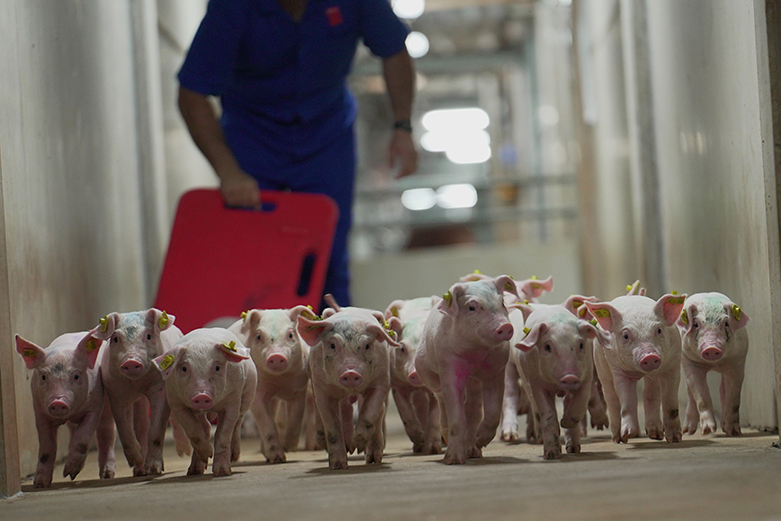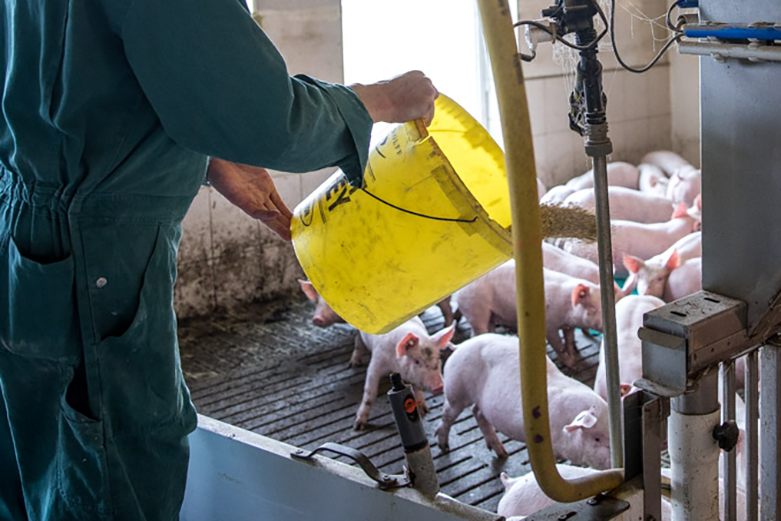WEANING OF PIGS: OPTIMAL MANAGEMENT AND NEW CHALLENGES – an 8-part series
- What happens at weaning
- Objectives at weaning for a sow
- Management of the dam and piglet during weaning
- Housing the piglet after weaning
- Feeding of the sow
- Piglet feeding at weaning
- Age at weaning
- Types of weaning according to the age of the piglet.
The authors:
Emilio Magallón Botaya – Veterinarian specialising in Economics and Pig Production.
Sara Beitia Delgado – Agronomist Engineer – La Almenara Farm
Pablo Magallón Verde – Technical Service PIC
David Roldan Feringan – Veterinarian-Granja La Almenara
Patricia Prieto Martínez – Veterinary Service Inga Food
Images provided by the authors
Advances in pig production require technical and precise management in order to obtain the full genetic potential of the animals. To achieve this, it is necessary to work with weaning targets for both the sow and the piglet.
Objectives at weaning for a sow
The production objective of a sow at the end of lactation is to wean a litter as large as possible, with a good quality and weight of the piglet, and in good body condition to successfully face the next cycle.
To achieve these objectives, the first step is to introduce a sow in the farrowing room in the best condition. In order to achieve this, the following points must be guaranteed:
Hygiene of the facilities
A correct protocol of cleaning, disinfection and drying of the room must be carried out.
Sow hygiene
The reduction of bacterial load can be achieved by showering the sow or applying soap to certain sensitive parts before entering the farrowing room, which will help to reduce the infection pressure in the farrowing room.
Adequate immunisation
In order to wean a large, high-quality litter it is essential that the sow provides her offspring with the necessary antibodies to deal with the pathogens they will face from birth. This requires a correct diagnosis of the pathogens present on the farm, and the development of a vaccination plan accordingly.
Transmission of immunity
Most piglets are capable of colostrating on their own, or at least partially. But with today’s prolific genetic lines, we must facilitate and support sufficient colostrum intake from the entire litter to achieve a homogenous immune status and weight gain of the piglet in the first hours of life (figure 1).
Figure 1: Distribution of the number of live births per farrowing on a farm with hyperprolific sows.

Sow health conditions at farrowing
For a sow to be able to suckle a litter correctly throughout lactation, she must not be suffering from infectious or inflammatory processes that could compromise her ability to continue to consume feed and produce milk for her litter. Inflammatory processes in the sow such as lameness, metritis and mastitis can lead to apathy, lack of appetite and, consequently, the sow is not able to produce milk and has to be weaned earlier than normal weaning. As shown in figure 2, a farm with inflammatory problems (lameness, mastitis) in farrowing sows has a high percentage of sows (7 %) weaning 0 piglets.
Figure 2: Piglets weaned per litter on a farm with lameness problems in sows in maternity.

Adequate body condition at farrowing
To promote high feed intake during lactation it is important to ensure that sows are in ideal body condition at farrowing and do not enter farrowing too fat. Fat sows will have a lower feed intake and will lose more body weight during lactation, which will have an impact on their prolificacy potential in the following cycle.
In order to monitor body condition, it is important to be able to objectify the measurements. There are several systems to make measurements, but one of the most practical is the Caliper, developed by Mark Knauer of the University of North Carolina, which measures the angle between the dorsal and transverse process of the spine at the level of the last thoracic rib (figure 3).
Figure 3: Visualisation of the angle measured by the Caliper between the transverse and dorsal process at the last rib.

This angle has a very high degree of correlation with the body condition of the sow and through thousands of measurements a validated measuring method has been developed, with this tool many companies work, to control this parameter. In the case of the Caliper, this range of scores is used:
- <12: thin sows.
- 12-15: sows in ideal body condition.
- >15: fat sows.
The data analysed on the measuring farms confirm this:
- Sows entering in fat body condition consume less feed in lactation (figure 4).
- By consuming less feed, they have more difficulty in weaning litters with high piglet weights.
- Fat sows lose more Caliper (body condition) scores during lactation.
- In figure 5 we see that for each unit of Caliper loss during the first lactation, the total births were reduced by 0.27.
Figure 4: Effect of body condition at farrowing on maternal feed intake

Figure 5: Effect of loss of body condition in the first lactation on prolificacy in the next cycle (TB total born).

An important objective is to avoid fat sows at farrowing, which have consumed more feed than necessary during gestation, which will have a negative impact on their ability to wean high numbers of piglets. Once the objectives set for the entry of the sows into the farrowing room have been achieved, feed consumption must be encouraged, how? By ensuring environmental comfort for the sow and stimulating feed intake by distributing the feed ration over several feedings per day. Ideally sows should eat ad libitum from the day after farrowing to reach high intakes, but under certain circumstances and/or feeding systems it may be advisable to set the pace. There are systems in place to monitor in-farrowing intakes to understand consumption patterns and alterations (figures 6, 7 and 8). In order to prepare the sow for the next cycle, with all the guarantees, it is necessary that the lactation has a minimum duration to respect the uterine involution. Lactation below 21 days may compromise fertility and prolificacy in the following cycle.
Different patterns of feed intake in maternity
Figure 6: Normal consumption pattern in lactation

Figure 7: Consumption pattern with MMA (Mastitis Mastitis Agalaxia) syndrome pattern.

Figure 8: Vaccination reaction pattern

The main objective for the sows at weaning is that they arrive with a good body condition to have a correct weaning-weaning interval (4-6 days) and a minimum duration of lactation that facilitates uterine involution and favours a good ovulation rate.
This series of articles was first published in the professional journal SUIS.



